Emperor shrimp gets its name from the crown-like shape of its carapace. These marine invertebrates are mainly found in shallow, tropical waters around the world but mostly in Indo-Pacific coral reefs.
With all the queries regarding emperor shrimp’s diet, habitat, and other factors, this article explains everything you need to know about them.
About Emperor Shrimp
| Category | Information |
| Scientific name | Periclimenes imperator |
| Family | Palaemonidae |
| Diet | Omnivores |
| Habitat | Coral reefs, on sea cucumbers |
| Distribution | Indo-Pacific region, Red Sea, and Great Barrier Reef |
| Size | .75 inch |
| Reproduction | Hermaphroditic – can change gender, fertilization occurs externally |
| Lifespan | 2-3 years |
The Emperor Shrimp (Periclimenes imperator), also widely known as the Imperial Shrimp, is a small and colorful crustacean that belongs to the family Palaemonidae within the order Decapoda.
It is widely distributed throughout the tropical waters of the Indo-Pacific region, ranging from the Red Sea and East Africa’s coast to the Western Pacific Ocean.
The Emperor Shrimp is easily distinguished by its vibrant and unique coloration. Its body displays a vivid shade of red or purple, with dense, white spots scattered across the exoskeleton. The legs, antennae, and abdominal segments are adorned with blue and yellow bands or patches.
These bright colors may serve as a warning to potential predators, alluding to the shrimp’s unpalatability. Adult Emperor Shrimps typically reach around 0.75 inches in size.
Next, I will disclose more about their anatomy, diet, habitat, reproduction, and so on. Read on.
Anatomy of Emperor Shrimp
The Emperor Shrimp is a small, brightly colored crustacean found in the Indo-Pacific region. Hailing from the family Palaemonidae, this shrimp is known for its great symbiotic relationships with various marine animals like sea cucumbers, nudibranchs, and sea slugs.

Having a fairly complex anatomy, the physique of the Emperor Shrimp is designed to thrive in aquatic environments.
External Anatomy
Size and shape: The Emperor Shrimp usually measures up to 0.75 in length. They exhibit a slender shape with a relatively elongated body, allowing them to navigate their host organisms easily.
Coloration: The vibrant coloration of the Emperor Shrimp makes it a popular subject among underwater photographers. The shrimp shines with bright red, yellow, and white markings. This fascinating display of colors not only provides an efficient camouflage against sea-dwelling predators but also attracts the attention of potential symbiotic partners.
Exoskeleton: Like all crustaceans, the body of an Emperor Shrimp is enclosed within a hard exoskeleton, which provides structural support and protects the shrimp from predation and infections.
Segments and Appendages: The shrimp’s body is divided into three segments: the cephalothorax, which encompasses the fused head and thorax regions, the abdomen, and the tail fan.
Emperor Shrimp possess a variety of appendages, such as jointed legs, swimmerets, and pincers, that are used for locomotion, food manipulation, and grooming.
Eyes: The compound eyes of Emperor Shrimp are located on stalks, offering a broader range of vision to help them perceive their surroundings, locate food, and be aware of potential threats.
Antennae: Apart from the eyes, Emperor Shrimp utilize two pairs of antennae for sensing their environment. The long antennae have chemosensory abilities, aiding the shrimp in detecting chemical signals, while the shorter antennae possess touch receptors for tactile sensing.
Gills: Gills are essential for respiration in Emperor Shrimp as they extract oxygen from the water and release carbon dioxide into the aquatic environment.
Internal Anatomy
Digestive system: The Emperor Shrimp’s digestion process begins with its mouth, which is equipped with ‘mandibles’ to crush and shred food.
The food particles then move through the esophagus into a two-chambered stomach, where enzymes and gastric juices are utilized for breakdown.
Finally, the nutrients are absorbed into the bloodstream in the midgut, and the undigested waste is excreted through the anus.
Circulatory system: Unlike humans, Emperor Shrimp have an open circulatory system comprising a heart with 3 Ostia, a ventricle, an esophagus, and an arterial system. The ostia are responsible for pumping blood to the gills, while the heart distributes nutrients around the body through arteries.
Nervous system: The shrimp’s nervous system consists of cerebral ganglia (a brain-like organ) and a ventral nerve cord, which transmits messages across the body. It helps coordinate overall movement, process sensory information, and maintain internal bodily functions.
What Do Emperor Shrimps Eat?
In the wild, emperor shrimps exhibit a versatile feeding behavior, which allows them to survive in diverse aquatic environments. You can find emperor shrimp as carnivores, herbivores, detritivores, and even omnivores. Their food habit changes regarding their stage of life.
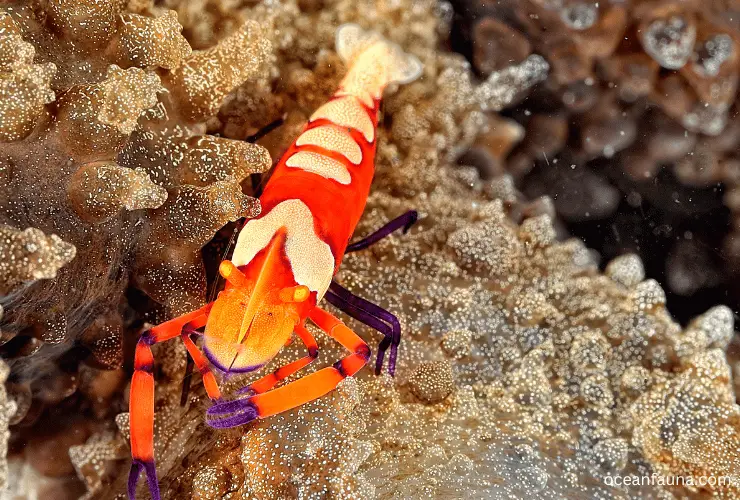
In this regard, their diet comprises algae, small crustaceans, detritus, and other microscopic organisms. In addition, they perform essential cleaning services for their hosts by removing parasites and dead tissues to form a mutually beneficial relationship.
Primarily, emperor shrimps are herbivorous, feeding on various types of algae, including green, red, and brown variants, that thrive within their habitats. As these algae are rich in nutrients and constitute a significant part of their diet, it provides the shrimps with energy and essential nutrients required for growth and reproduction.
Another vital aspect of their diet is small crustaceans, such as copepods, amphipods, and isopods. With their keen eyesight, Emperor shrimps use their specialized feeding appendages, called chelipeds or pincers, to snatch, macerate, and consume these tiny crustaceans. This predatory behavior contributes to their omnivorous nature and provides essential proteins and lipids crucial for their overall health and well-being.
Moreover, emperor shrimps also feed on detritus, which mainly constitutes decomposed organic matter such as dead plants, exoskeletons, and fecal matter. Detritus is abundant in their surroundings, and its ingestion is essential in recycling nutrients and maintaining a balanced marine ecosystem.
Also, detritus acts as a source of organic carbon, contributing to these shrimps’ energy needs.
In a home aquarium setting, it is crucial to replicate these diverse dietary sources for emperor shrimps to ensure optimal health and longevity. Providing a combination of frozen or dried foods, such as spirulina flakes or pellets, freeze-dried daphnia or brine shrimp, and various sinking pellets specifically designed for shrimps will imitate their natural feeding behaviors.
Additionally, introducing live foods such as copepods or amphipods can add variety and aid in promoting a more natural, predatory feeding response in the shrimp.
Where Do Emperor Shrimps Live?
Emperor shrimps thrive predominantly in the expansive Indo-Pacific region. This region stretches from the eastern coast of Africa to the western coast of the Americas, encompassing the Indian Ocean, the Red Sea, and the Pacific Ocean.

The widespread distribution of emperor shrimps owes largely to the diversity of their potential hosts, which are endemic to various habitats within this vast marine ecosystem.
These vibrant, commensal shrimps often inhabit reef ecosystems, including shallower reef flats and deeper slopes. Slopes and reef flats provide ample living spaces and feeding opportunities for emperor shrimps, where they can excavate nutritious algal detritus in the grooves and crevices.
Aside from reefs, emperor shrimps also reside in the calmer, enclosed waters of lagoons and bays. These serene environments offer seclusion and protection for the shrimps and their hosts, away from the strong wave action or currents.
Emperor shrimps are primarily benthic organisms, dwelling on the seabed or bottom substrates of their preferred marine environments. The sandy and muddy ocean floor, laden with organic debris or detritus, serves as an excellent source of food for these tiny foragers.
They often scavenge on the seabed, consuming particles and microorganisms that accumulate among the sand or substrate. This benthic lifestyle also enables the shrimps to reside symbiotically on various hosts, such as sea cucumbers, nudibranchs, and sea slugs, which they rely upon for transportation, protection, and food resources.
Living in cooperative associations with their host species, emperor shrimps are proficient at utilizing resources within their dynamic environment. With their adaptable nature and striking appearance, it is no wonder that these intriguing crustaceans have successfully populated vast regions of the Indo-Pacific marine kingdom.
What Is the Lifespan of Emperor Shrimps?
The lifespan of emperor shrimps (Periclimenes imperator) typically ranges between 2 to 3 years. These fascinating crustaceans belong to the Palaemonidae family and are known for their vibrant colors and unique symbiotic relationships with various marine invertebrates.
Additionally, being relatively low in the oceanic food chain, they often fall prey to larger predators like fish and other crustaceans.
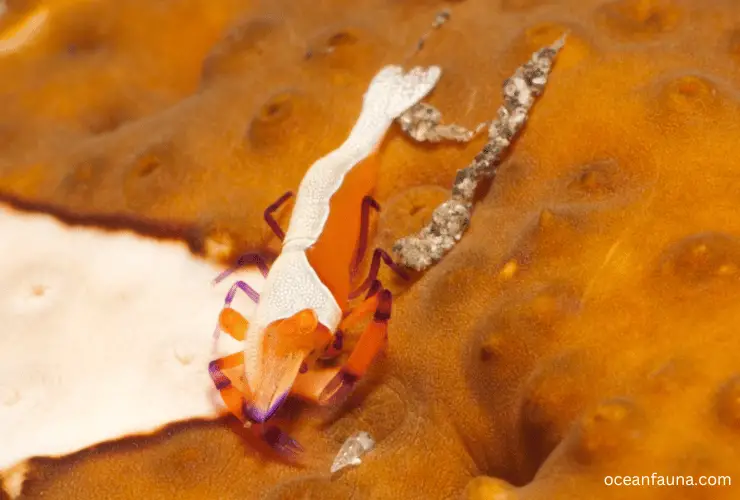
Emperor shrimps exhibit a characteristic behavior known as symbiosis, where they form close relationships with their host invertebrates. In this mutually beneficial association, the shrimp receives protection and transportation from its host while it offers cleaning services by removing parasites and debris from the host’s body.
This interaction is essential for the shrimp’s survival and considerably influences its lifespan.
How Do Emperor Shrimp Reproduce?
Emperor shrimp possess a unique and fascinating reproductive cycle compared to other marine creatures. These shrimps are protandrous hermaphrodites, meaning that they are born with male reproductive organs and can change their sex to female as they age and reach a certain stage of maturity.
This transformation aids them in maximizing their reproductive success and enhancing their opportunities for procreation, promoting the survival of their species.
The reproductive process of emperor shrimp begins when a male locates a receptive female, usually larger and older than him, as they are more likely to have transitioned into their female phase.
To facilitate reproduction, they often utilize chemical cues and physical signals, such as color changes or specific movements, to attract and communicate with potential mates. These interactions can be complex, as emperor shrimp commonly live in symbiotic relationships with other marine animals, like sea cucumbers or nudibranchs, which may impact their mating choices.
Once a suitable partner is found, the male transfers his sperm to a specialized structure called a spermatophore, which is a sac containing the spermatozoa. This spermatophore is deposited within the female’s brood chamber, a pouch on her thoracic region.
The female then extrudes her eggs, which become coated with the male’s sperm as they pass through the spermatophore, thus ensuring successful fertilization. This process is known as external fertilization since the embryos develop outside the female’s body.
After fertilization, the female releases her eggs into the ocean currents. These currents are crucial in carrying the eggs across vast distances, providing the species with a high degree of genetic diversity and increased adaptability in diverse habitats. Due to the relatively small size of emperor shrimp and their planktonic nature, their dispersal potential is exceptional.
Once the eggs hatch, the resulting larvae embark on a developmental journey that involves several stages before reaching full maturity. Initially, the larvae undergo a stage known as zoea, during which they are planktonic and may drift with the current, feeding off available nutrients.
Over time, they grow and molt, eventually transitioning into the next stage called mysis. Mysis is primarily marked by differentiation in the larvae’s body structures and the development of appendages that enable them to swim more actively.
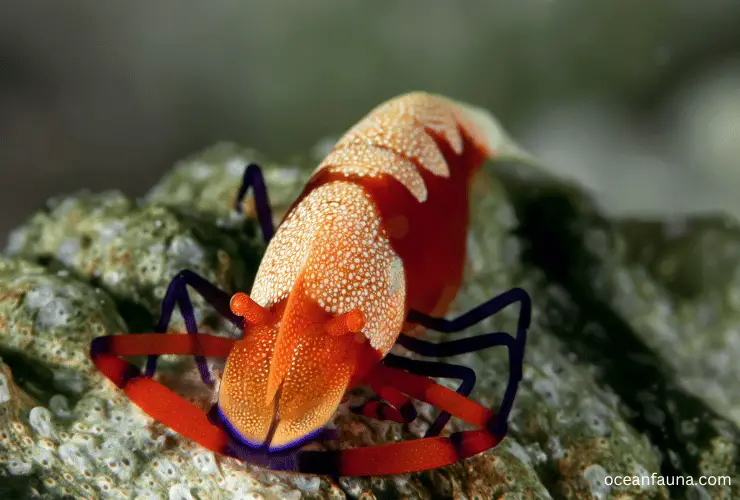
Upon reaching the juvenile stage, the shrimp start to resemble adult emperor shrimp in appearance; however, their sex is still undetermined at this point. As they grow, they will continue to molt and eventually become sexually mature, possessing male reproductive organs.
Following this, some shrimp may undergo the process of protandrous hermaphrodism and become females, fulfilling their life cycle and securing the continuation of their species.
Can You Keep Emperor Shrimp in An Aquarium?
Yes, you can keep emperor shrimp (Periclimenes imperator) in a home aquarium, but you have to carefully plan and prepare the environment to ensure the health and well-being of these fascinating creatures.
Emperor shrimp rely on a symbiotic relationship with a host, such as a nudibranch, sea cucumber, or Medusa worm. To keep emperor shrimp in an aquarium, you must consider their unique needs, from food sources to tank mates.
Emperor shrimp are known for their vibrant red and white coloration, making them an attractive addition to any marine aquarium. Endemic to the tropical Indo-Pacific region, the ideal temperature range for emperor shrimp is between 72 and 78 degrees Fahrenheit (22-26 degrees Celsius). You have to maintain this temperature range for optimal health and survival.
Moreover, emperor shrimp feed on a variety of foods, including phytoplankton, detritus, and small amounts of meaty foods like Mysis shrimp. You can supplement their diet with prepared frozen food or other live prey items.
Additionally, emperor shrimp are peaceful invertebrates and must be kept with other tank mates that have similar habits and activity levels. They do well in reef tanks with corals and anemones, but beware of aggressive fish species that may see them as prey.
Potential Threat to Emperor Shrimp
Emperor shrimp are facing a few looming threats, such as habitat loss from human influence and the warming of the oceans. These small creatures call shallow waters along coral reefs and seagrass beds home, but these habitats are being degraded by overfishing, sedimentation, and pollution caused by humans.
Also, ocean temperature increases have an adverse impact on their food source – coral reefs – further jeopardizing emperor shrimps’ well-being.
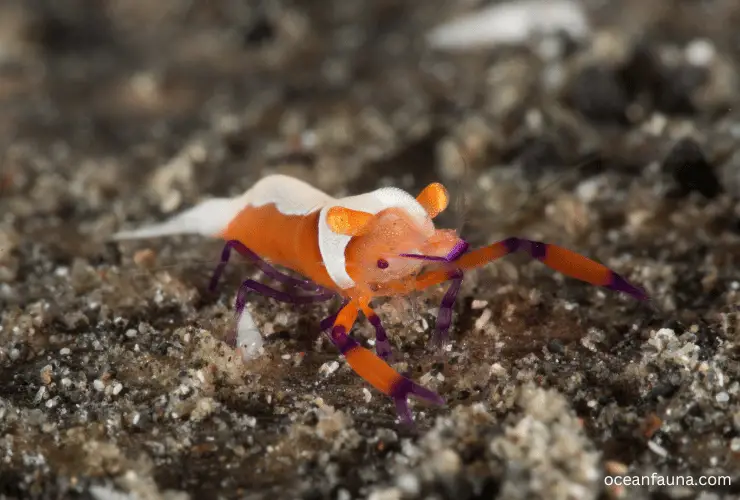
Another potential threat for emperor shrimp is bycatch, which is when unintended species are caught in fishing nets or lines. Although this isn’t a direct threat to the species, it can still impact overall populations since they may be accidentally killed while being retrieved from fishing gear.
Furthermore, the introduction of invasive species is another threat to emperor shrimp. Invasive species can disrupt the food web, compete for resources and introduce diseases that can significantly impact native populations.
Fun Facts: Emperor Shrimps
- Emperor Shrimp are known for their unique symbiotic relationship with marine animals like sea cucumbers, nudibranchs, and slugs.
- Emperor Shrimp are excellent cleaners and provide an essential service to their hosts by removing parasites and dead tissues, forming a mutually beneficial relationship.
- They are also known as Imperial Shrimp due to their regal appearance.
- Emperor Shrimp have a wide distribution throughout the tropical waters of the Indo-Pacific region, ranging from the Red Sea and East Africa’s coast to the Western Pacific Ocean.
- Emperor Shrimp possess compound eyes on stalks, which allow for a broader range of vision to help them perceive their surroundings.
- The vibrant coloration of Emperor Shrimp not only provides efficient camouflage against sea-dwelling predators but also attracts the attention of potential symbiotic partners.
- Emperor Shrimp are voracious eaters, preying upon an array of food items such as algae and tiny crustaceans to detritus and other microscopic organisms.
- Emperor Shrimp are comparatively tiny, with adult specimens typically reaching around three-fourths of an inch in length.
- Emperor Shrimp use their articulated legs, swimmerets, and pincers to get around, snatch food, and tidy up.
- Emperor shrimps are protandrous hermaphrodites, meaning they first develop as males before becoming female.
Conclusion
Now, you know everything about the emperor shrimp. These creatures are beautiful, fascinating, and important to the environment, but they are at risk of extinction due to human activities. By understanding the threats that emperor shrimp face and taking steps to protect them, we can ensure their continued survival in the wild.
Also, if you have further questions about this beautiful marine creature, let me know.


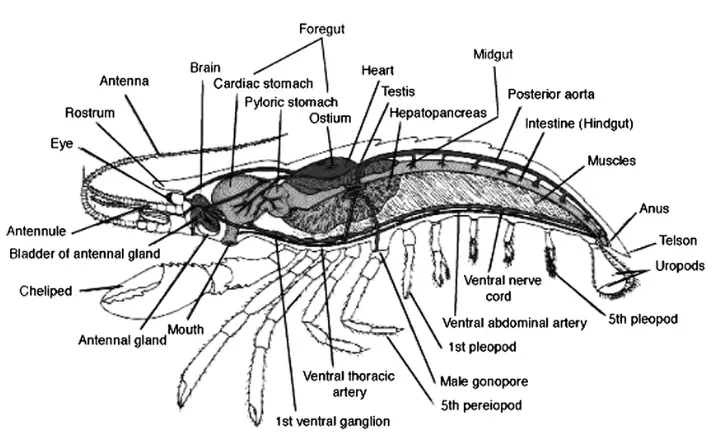
Appreciate this post. Will try it out.